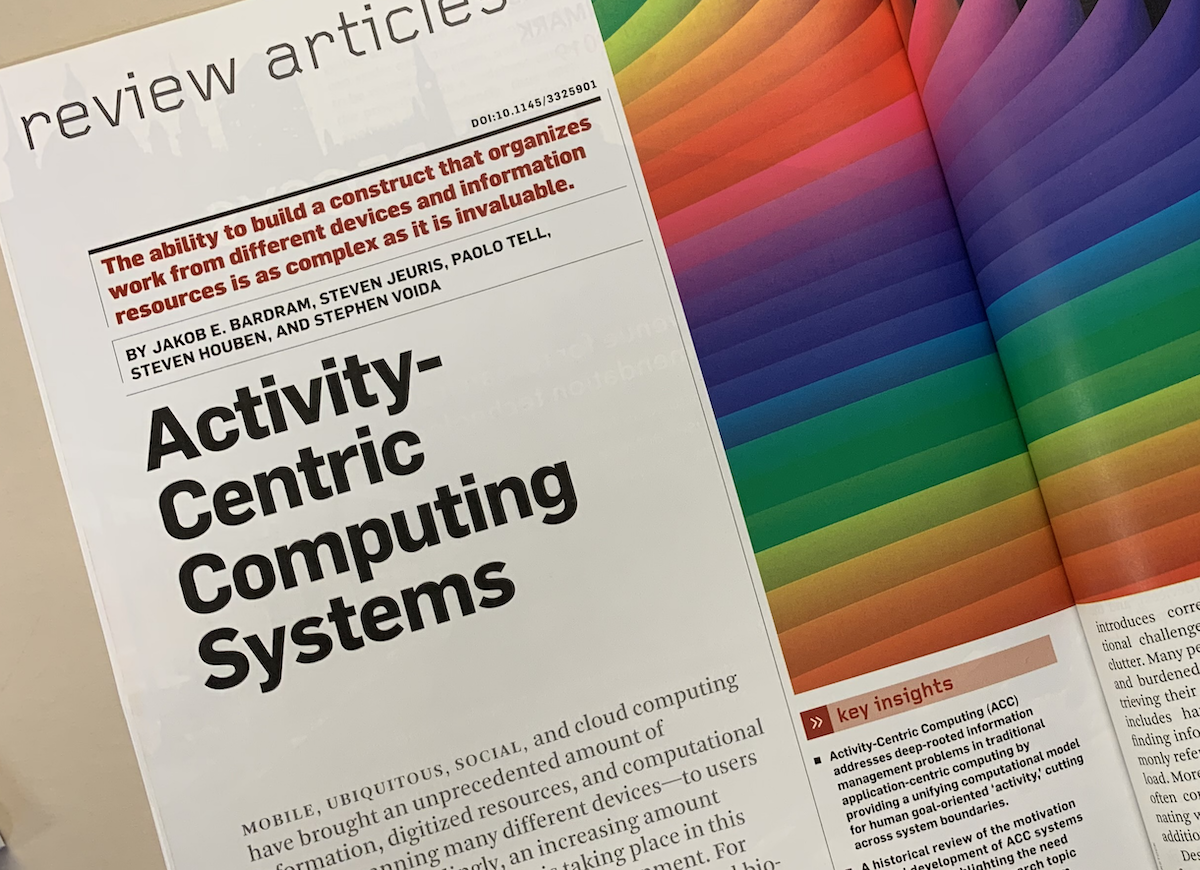In the August issue of the Communication of the ACM, our review of Activity-Centric Computing Systems was published [1]. This review covers a lot of research done by my research group over the years, as well as the works of others. The review was done in a systematic manner, trying to cover all the different kinds of research done in activity-centric computing over the years.
This review is useful – in my opinion – since it both provides an overall introduction to the concept of activity-centric computing as well as provide a historic and technological overview of the kind of research being addressed.
ACM also made a really nice video based on the paper, in which I try to explain the concept.
The goal of activity-centric computing is to replicate the multifaceted and complex nature of human activities in the real world in a computational representation. Activity-centric systems do not provide another application, service, or collaboration tool, but rather integrate existing tools across devices, people, services, and resources in a manner that reflects the real-world activity being done. The design challenge in activity-centric computing is to create activity representations that are simple, yet flexible enough to accommodate different levels of rigidity.
“A ‘computational activity’ – or just ‘activity’ – is a computerized representation of a real-world human activity. The purpose of the computational activity is to reflect the human activity and to provide access to resources relevant to its execution.” [1] p. 74
The systematic review uncovered 101 papers in peer-reviewed journals and conference proceedings, covering 68 unique activity-centric computing technologies. A complete list is available as supplementary material to the paper. We found that activity-centric computing has been used in many types of applications – information work, software engineering, biology, and clinical work – and many different types of technologies has been developed – device mangement, operating systems, distributed computing, file management, and user interface management software. A historical outline of the research done since the 1980s is shown in the figure below.

References
![[pdf]](https://www.bardram.net/wp-content/plugins/papercite/img/pdf.png)
[Bibtex]
@article{cacm-bardram2019,
author = {Bardram, Jakob E. and Jeuris, Steven and Tell, Paolo and Houben, Steven and Voida, Stephen},
title = {Activity-centric Computing Systems},
journal = {Commun. ACM},
issue_date = {August 2019},
volume = {62},
number = {8},
month = jul,
year = {2019},
issn = {0001-0782},
pages = {72--81},
numpages = {10},
url = {http://doi.acm.org/10.1145/3325901},
doi = {10.1145/3325901},
acmid = {3325901},
publisher = {ACM},
address = {New York, NY, USA},
}
